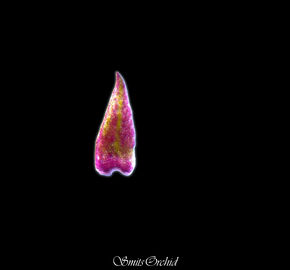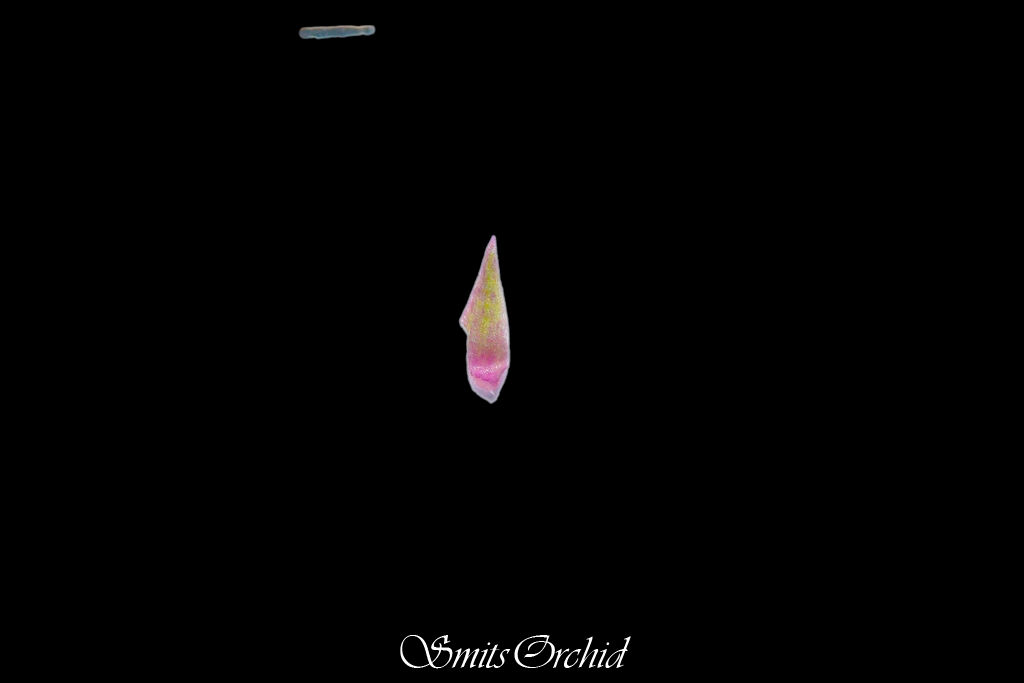
Crepidium Blume
Sub family: Epidendroideae
Tribe: Malaxideae
Terrestrial, rarely epiphytic or lithophytic herbs.
Stems creeping, with erect leafy apex; or short, fleshy and close together, bearing few to many leaves.
Leaves broad, often unequal-sided at the base, thin, more or less plicate, inarticulate, sheathing at the base.
Inflorescence terminal, in few- to many-flowered unbranched elongated raceme of small flowers.
Flowers non resupinate, green brown yellow pink or purple
Bracts Setose to lanceolate persistant
Sepals free, or the lateral ones more or Iess connate, spreading.
Petals ovate-Ianceolate to narrowly linear filiform often strongly coiled.
Lip sessile, superior, erect or spreading, entire or 3-lobed, concave to saccate, often with a hollow near the base, usually with 2 large lobes (called auricles) close to the sides of the column and extending downwards below it, the apex often toothed.
Column very short, terete, hollowed on top, often toothed at the apex, with or without fleshy arms. Anther terminal, sessile, erect on the back of the column, its tip pointing upwards pollinia 4, waxy. ovoid, free or cohering in pairs to a viscid mass.
Capsule small ovoid. ellipsoid.

Crepidium versicolor (Lindl.)
Sushil K.Singh, Agrawala & Jalal
In Orchids Maharashtra: 57 (2018)
Sub family: Epidendroideae
Tribe: Malaxideae
-
Corymborkis versicolor (Lindl.) M.R.Almeida in Fl. Maharashtra 5A: 30 (2009)
-
Malaxis versicolor (Lindl.) Abeyw. in Ceylon J. Sci., Biol. Sci. 2: 83 (1959)
-
Microstylis versicolor Lindl. in Gen. Sp. Orchid. Pl.: 21 (1830)
-
Seidenfia versicolor (Lindl.) Marg. & Szlach. in Polish Bot. J. 46: 56 (2001)
-
Liparis priochilus G.Lodd. in Bot. Cab. 18: t. 1751 (1831)
-
Malaxis rheedei B.Heyne ex Wall. in Numer. List: n.° 1939 (1829), pro syn.

Ecology: This is terrestrial as well as lithophytic, rarely epiphytic, grows under dense shades of trees in humus rich soil in ever green forest, I have observed that in lithophytic plants growing in sunny places flowers are yellow while terrestrial plants growing under dense shade are deep reddish- purple; I’m not sure but nutrients and or amont of sun light plant receives may be factor which determine colour of flowers

Stem erect, 3-25 cm tall, slightly swollen at the base, sheathed greenish-purple ;
sheaths 2-5 x 1-1.5 cm, ovate-Ianceolate, acute or acuminate, green-purple with 3-5 prominent purple nerves.

Leaves 3-5, petiolate, sheathing plicate ; petioles 2-6 cm long, amplexicaul, green-purple with a few purple nerves; lamina 5-18X2.5-11 cm, ovate-lanceolate or broadly ovate or elliptic-Ianceolate, acute, glabrous, 8-10 nerved ; margins slightly crimped, denticulate ; nerves depressed above, prominent below, purple-green.

Inflorescence 8-35 cm high, dense or lax ; peduncles 3-10 cm long, angled, purple with a few bracts at the top. Buds green when young, turning yellowish to purple at maturity, ovate, obtuse, slightly curved.

Flowers 4X 4 mm, yellow with a pale purple tinge when young, becoming deep reddish-purple with age, and again somewhat yellow on fading, pedicellate.

Bracts 3.5X 1-1.5 mm, erect and green in bud, deflexed and slightly purple at the base after anthesis, lanceolate, acuminate entire.

Sepals unequal, purple, obtuse, entire, 3-nerved ; the dorsal one 4 mm long, linear and reduplicate with a broad base; the lateral ones 3x1 mm, broadly ovate and conduplicate with a broad back, subfalcate.

Petals 3.5mm long, purple, slightly curved, acute, entire and reduplicate.
Lip superior through a twist of 180 degrees, 2.5 x 4 mm, purple, rounded, reniform and somewhat fan shaped, pectinate except for a small portion in the middle ; teeth usually about 8-11, curved, pointing towards the centre; the claw small concave, just opposite the column.

Column about 1.5x 1 mm, yellow, footless, somewhat constricted in the middle with 2 very short arms.
Anther whitish, globose; pollinia 4, waxy, in pairs, broadly ovoid. Stigmatic surface yellow, oblong-truncate.
Pedicel with ovary 2-5 mm long, deep brown-maroon, strongly ridged.

Capsules 10x 6 mm obovate, pyriform.
Flowering: July to August.
Fruiting: September to March.

Threat : These are mostly shade loving plants so deforestation is major cause of reduction in their population in addition plants are curshed under feet of cattlesl; Increased temperature also harms this orchid













